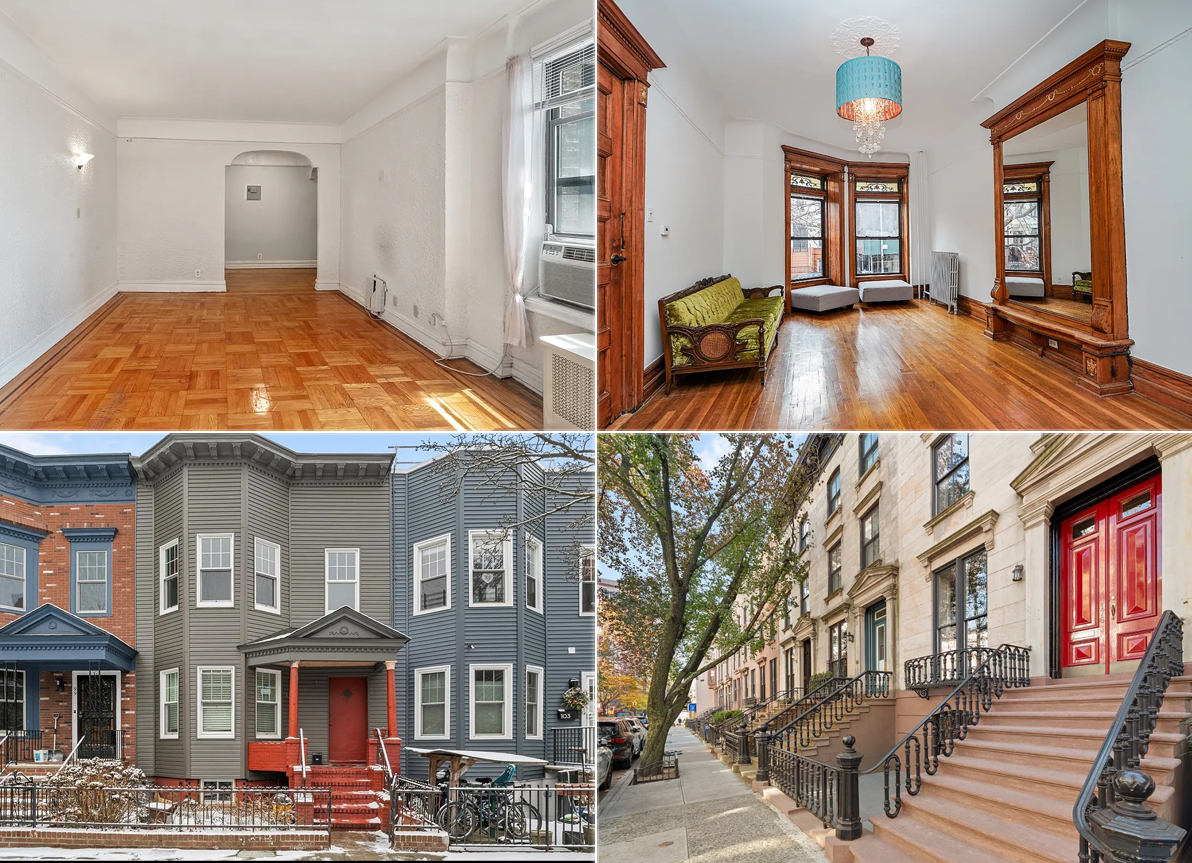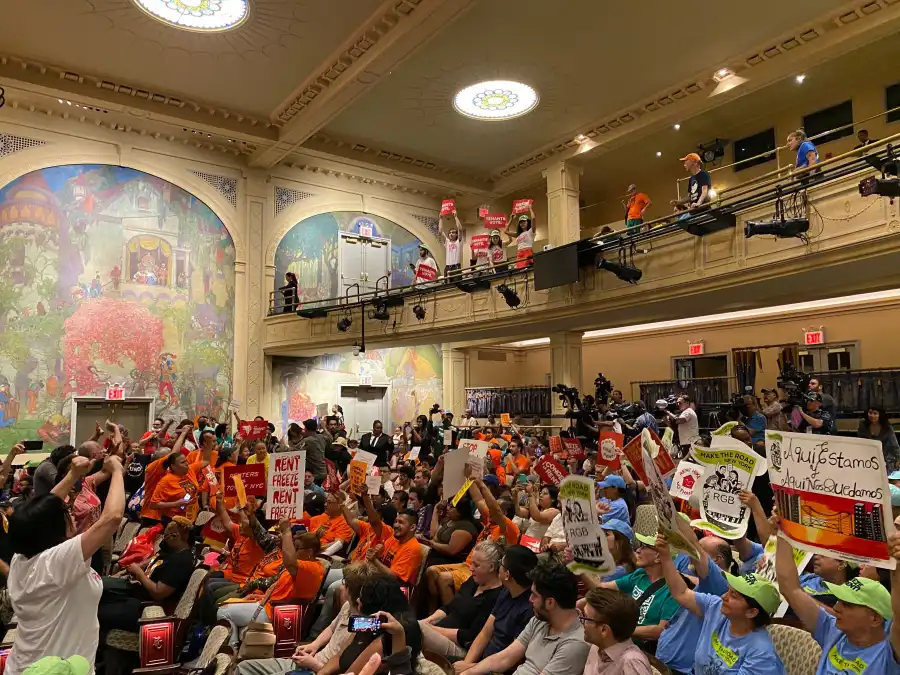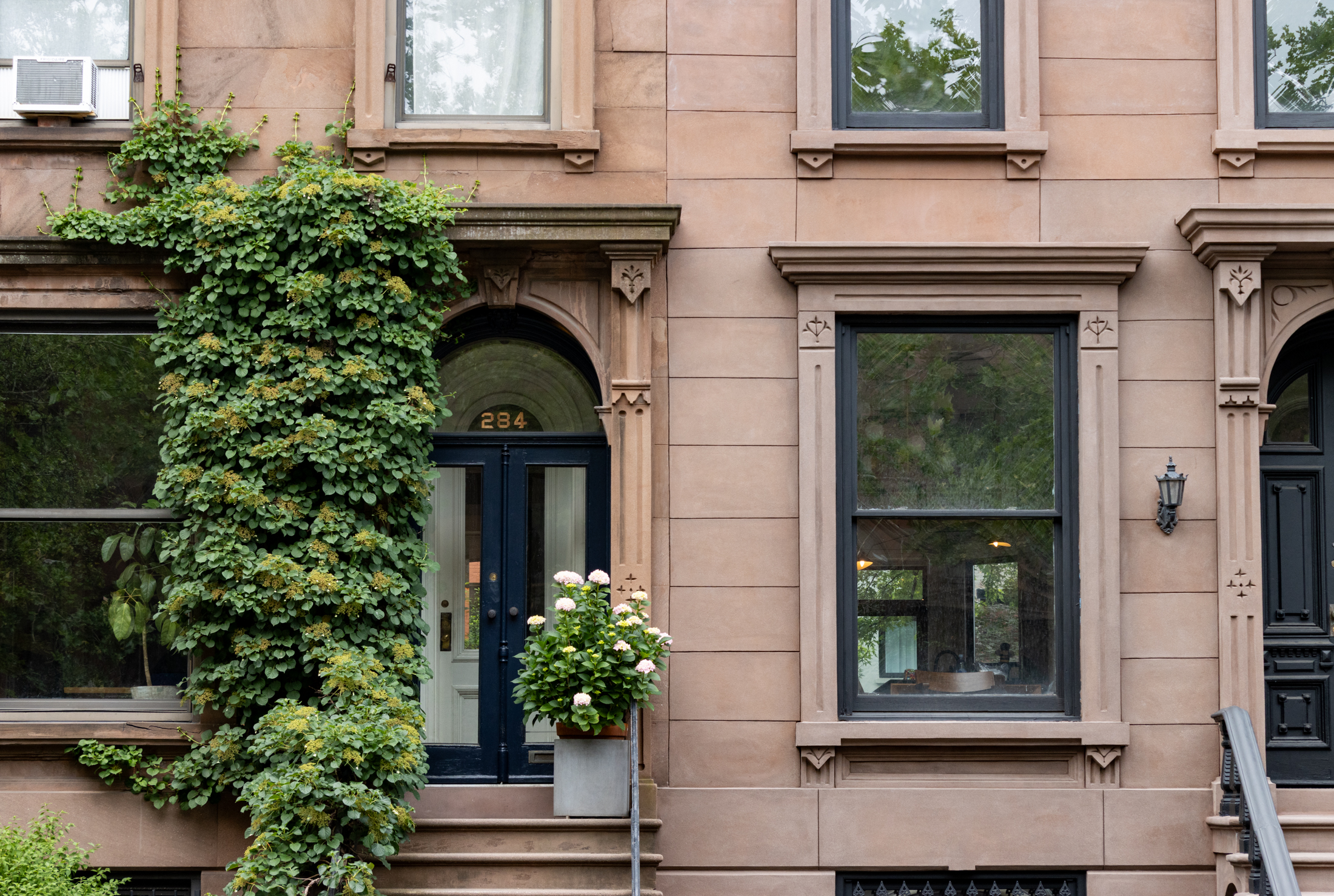W'Burg Builders Sue, Say Rezoning Like Eminent Domain
Rezoning and eminent domain (and landmarking) have been the hottest topics in Brooklyn development over the years, and a group of Williamsburg property owners are saying they’re one in the same. Dozens of property owners affected by last week’s Grand Street rezoning are preparing to sue the city, as detailed in The Real Deal. The…
Rezoning and eminent domain (and landmarking) have been the hottest topics in Brooklyn development over the years, and a group of Williamsburg property owners are saying they’re one in the same. Dozens of property owners affected by last week’s Grand Street rezoning are preparing to sue the city, as detailed in The Real Deal. The owners charge the proposal was ramrodded through the approval process to prevent their participation. One petitioner said eminent domain is almost better. “The government is required to compensate you for the loss at some sort of market rate,” he said. “Whereas in zoning … there’s no requirement for compensation and a very limited requirement for notice.” John Isdith and his father, Carlos, pictured above, are among dozens of small-time developers who, now forced to reduce their project, said they’re considering joining the suit. Do the two have similarities? Which is more unfair—downzoning or eminent domain?
Williamsburg Developers, Homeowners to Sue City [TRD]
Council Green-Lights Grand Street Rezoning [Brownstoner]





I agree with the senior who was raised in Williamsburg. There does seem to be something smelly with this situation. Who is the Judas? Believe me, it will come out in the end. Too bad so many people are jealous of the ones who are trying to make it better for “EVERYONE”.
As a senior citizen who was born and raised in Williamsburg it is terrible that there is all of this fighting with the size of buildings. Do these people own property? Probably no. So why all the fuss? The small people building five story buildings are only trying to make Williamsburg beautiful. Is there a law against this? From what I am seeing, there is a Judas among this group. Why would some people know about the city council hearing on 3/26 and others found out by accident? Why are some people interested in what other people will make? Is it jealousy? From what I read in the article with Mr. Isdith and his son John, Mr. Isdith is a current property owner who is paying to have his building built. He is not a big developer and he does have to pay his bills.
To 2:20 – These “People” are mostly hardworking people and not “Big Developers” who want to beautify Williamsburg and rid it of an abundance of abandoned lots which have only become unsightly parking lots. They are getting caught in the wash with these larger developers as it is not cost effective for them to build unless they can have specific square footage. The larger developers don’t really care in the end as they will build anything possible and can afford to.
One Question – Are you even a homeowner that could be impacted by this ruling?
these people only care about making a quick buck. Don’t even try to compare the building which will go up with the empire state building… It’ll either be an ugly glass structure or another fedders building.
There does seem to be a lot of ad hominem here.
I think this is all just buyers remorse with the down-zoning. I’ve followed the “process” pretty closely over here in Carrol Gardens and the neighbors are stumbling all over themselves to down-zone. Afraid of something terrible that they are not sure what it is. A few “preservationists” have talked them into “saving the context of the community”. They have absolutely no idea they are losing property value. Sometimes, when confronted with the reality they accuse any opponents of being “greedy” and “drinking Ratners kool-aid”.
A lot has already been lost to down-zoning and the surviving industrial area landlords know that if they can keep their buildings empty of workers long enough they can have their building turned residential making them a gazillion. Thats the flip side of the down-zoning. It squeezes property values out of one area and it flows to another area. Ironically the real speculators have been buying up the industrial property for years and are actually happy the downzoning is going down. They are over in the M zones waiting for a “swap” like they did in south Park Slope.
The owners of the small frame houses in the South Slope really got snookered by the “community activists”. Upzoning made a gazillion along 4th Ave, drove out the manufacturers and the small houses up the hill had their property values castrated.
Now that the business cycle is kicking the real estate market in the ass there won’t be any need for down-zoning. Once it is down it will be very difficult to get it back up. Worse with the industrial areas “foremen says these jobs are going and they ain’t coming back”.
4:41 – The arena, in this case, is privately owned. By using eminent domain, the state is acquiring the property for a private use. Yes, an arena is a public venue, but presumably the Nets games will not be free. All the benefit of the taking reverts to Ratner and the Nets, not the public at large.
I think that is different than a park or a power plant or a dam or some such. On the other hand, I’ll grant that it is more of a public benefit than, say, a hotel and commercial development in a waterfront district of New London, Conn.
Again, its public use vs. public benefit, and personally, I think Kelo was a seismic shift. Perhaps it just codified where things were going anyhow, but what it codified was a very different landscape. As you point out, private use (the subway) can be a public benefit; an arena is less of a universal public benefit, but a benefit nonetheless. (Somewhat irrelevant, but did the original subway construction use eminent domain? I’m not sure that it did – there certainly were city and state actions required, but I don’t know that any land was actually condemned and acquired specifically for the construction of the IRT et al. Most of the track runs under the streets, which were already public property, eg.)
As for last statement, I agree. Personally, I oppose abuse of ED, but not ED itself. In other words, I think a Kelo-type acquisition crosses the line, but I don’t think all ED is de facto bad. I also think that zoning and other partial takings that serve the pubic good are good. And that includes contextual zoning, landmarking, parks designations and the like. Used responsibly, this is how we manage our built environment to the benefit of all.
With regard to 12:09 above – Exactly HOW MANY developers got their foundations done in time??? From what I know of NONE did. This whole process was fast-tracked and many small developers (regular home owners looking to improve a neighborhood full of vacant lots) got screwed in the process.
Thank Goodness that you CLOSE-MINDED Individuals were not around when the Empire State Building, Twin Towers and the like were being built because where would NYC be today?
Exactly, 2:34. The downzoning proponents have their homes so they don’t care if anybody else gets to buy a place.
Oh and if anyone thinks the downzoning in areas convenient for commuters will be upheld 20 years from now when the population has increased substantially, think again.